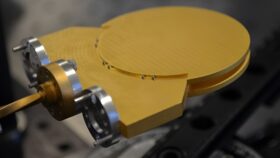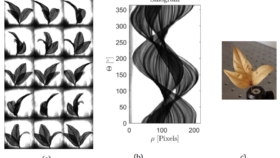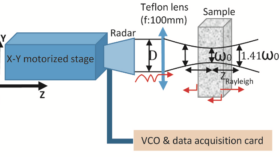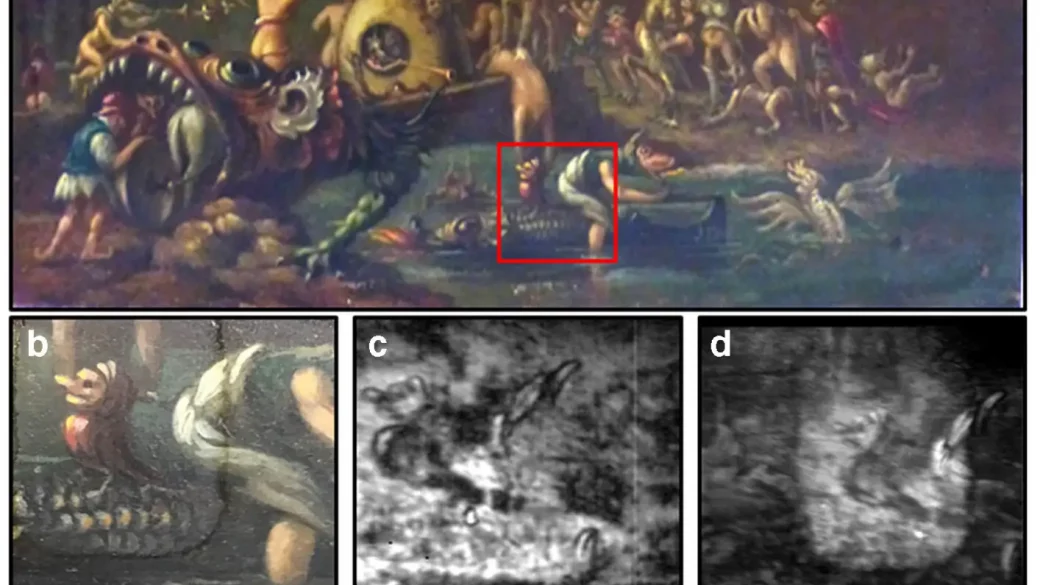
Varnish Ageing characterization with terahertz waves
This paper focuses on the analysis of time-domain data regarding the measurements conducted on a French Renaissance painting realized on a metal substrate (copper). We specifically focus on the dielectric characterization of the varnish layer and its ageing consequences on THz images. Principal investigators are Quentin Cassar and Corinna Koch Dandolo.
The painting
The oil on copper plate painting under inspection is a seventeenth-century painting. It presents a scene with many characters drawn with very fine details, which is reminiscent of the works of Hieronymus Bosch.
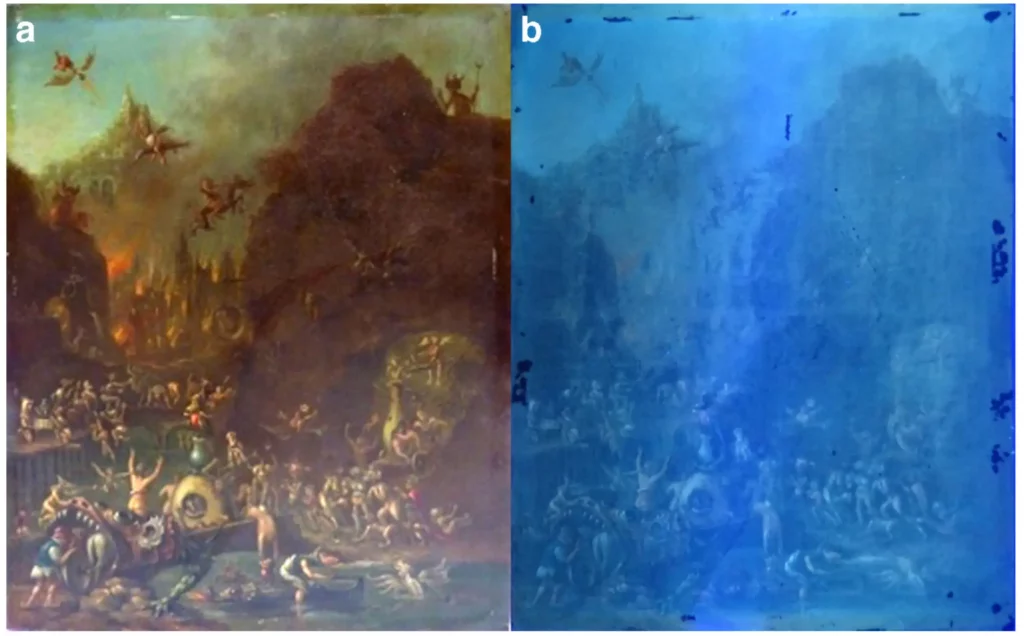
Time domain characterization of the painting – imaging
You can below photography and several THz images of the painting. Specific details that were not revealed from optics have been highlighted by means of terahertz imaging and are depicted for two specific locations on figure below (a). depicts a half-naked lady with hands up, located on the low middle left part of the painting. Different observations revealed by terahertz imaging are underlined by red circles and arrows on (b). First, part of the shawl is clearly visible on the lady’s body but not under her left arm. This contrast change may be due to different painting materials or different reflection coefficients of the underpainting layers. The arrow on the left arm indicates a black line appearing that likely denotes the signature of the previous restoration. The hairs are also very different on comparing the visual image with the terahertz one. The contour suggests that the artist modified them with regard to a previous version. At least, some features are present on the top left part of the drawing but nothing is visible on the painting.
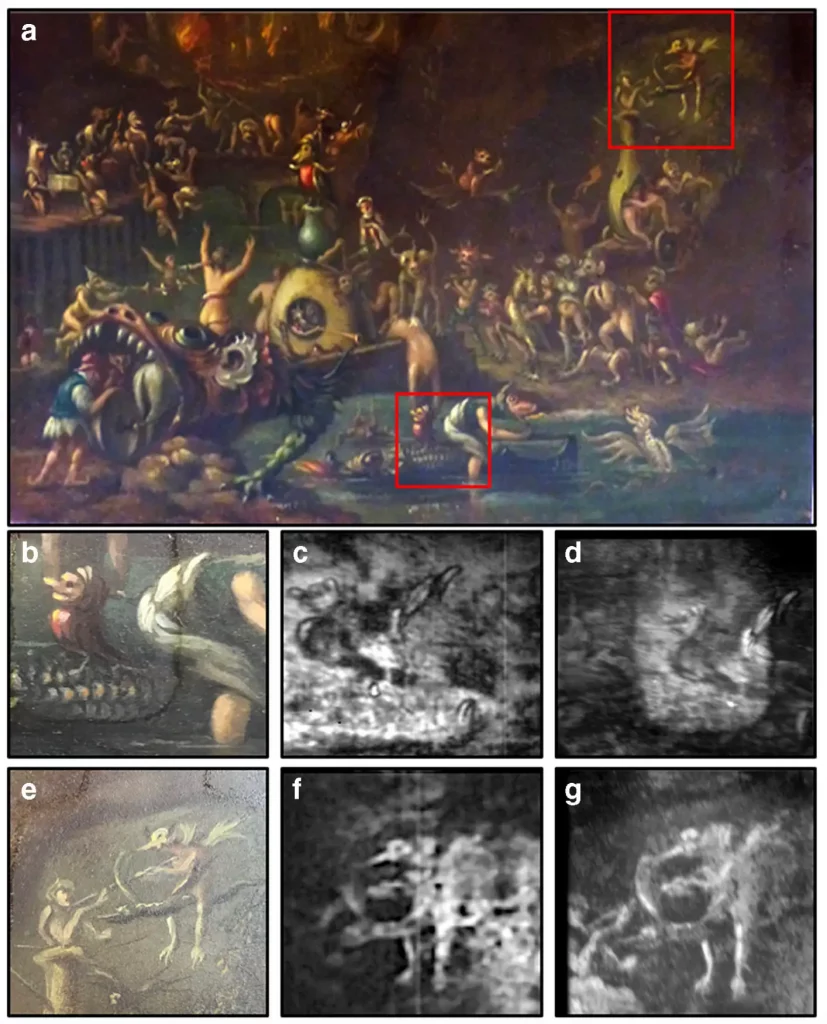
Varnish characterization
The estimation of the intrinsic properties, as well as the thickness of the varnish layer, was derived from solving an inverse electromagnetic problem. These methods are needed to extract information from thin stacks (less than 100µm).
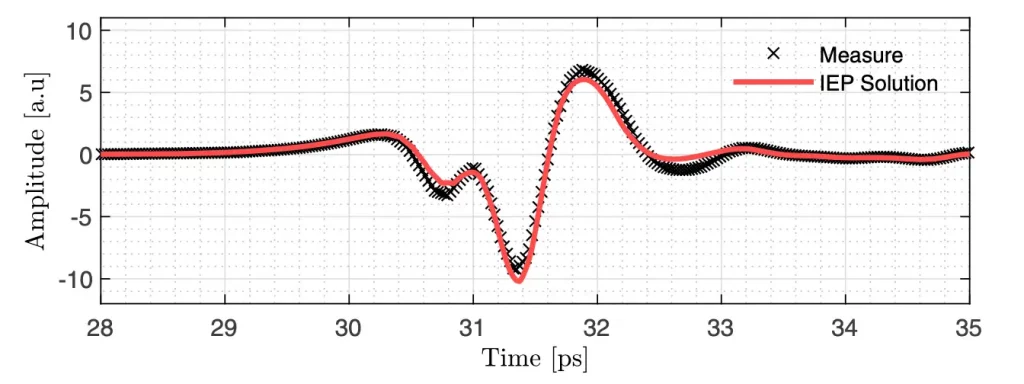
For more details, link to Varnish article
Cassar, Q., Koch-Dandolo, C. L., Guillet, J. P., Roux, M., Fauquet, F., Perraud, J. B., & Mounaix, P. (2020). Characterization of varnish ageing and its consequences on terahertz imagery: Demonstration on a painting presumed of the french renaissance. Journal of Infrared, Millimeter, and Terahertz Waves, 41(12), 1556-1566.
